
Little Pink Fairy Orchid
Caladenia reptans
Synonyms
- Caladenia preissii
- Caladeniastrum reptans
Notes
The Little Pink Fairy Orchid is endemic to WA, occurring south-west of a line from Kalbarri to Bremer Bay. It is particularly common and widespread across the Wheatbelt region where it can be found in large numbers in remnant woodland. Little Pink Fairy Orchids grow in a variety of different habitats and soils, including sandy, loamy and lateritic soils in forests and woodlands. The peak flowering period is late winter. As they are capable of multiplying vegetatively, Little Pink Fairy Orchids will often form dense clumps that can sometimes be made up of dozens of individual plants.
As its name already suggests, the Little Pink Fairy Orchid essentially looks like a smaller version of the Pink Fairy Orchid (Caladenia latifolia). The Little Pink Fairy Orchid can be distinguished through its shorter flower scapes and slightly smaller flowers with somewhat more rounded petals and sepals. In addition, it is generally more abundant in the drier, semi-arid regions of WA, while the Pink Fairy Orchid is mostly confined to high-rainfall areas near the coast. However, both species are occasionally seen growing together in the same location, with the Pink Fairy Orchid typically flowering about a month later than the Little Pink Fairy Orchid.
At the northern end of its range the nominate subspecies is replaced by the Pale Pink Fairy Orchid (Caladenia reptans subsp. impensa ) which is characterised by its typically longer flower stalks, slightly larger flowers and generally paler colour. The Pale Pink Fairy Orchid is restricted to near-coastal areas north of Geraldton.
Photos
Little Pink Fairy Orchid (Caladenia reptans subsp. reptans)



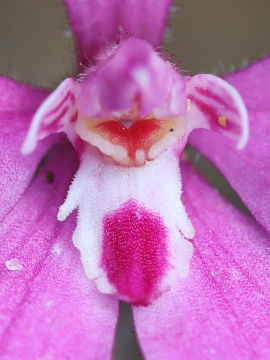




Pale Pink Fairy Orchid (Caladenia reptans subsp. impensa )
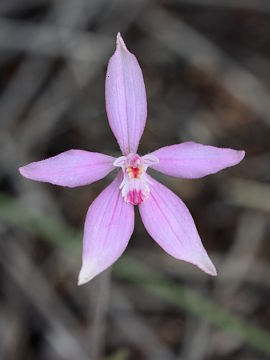
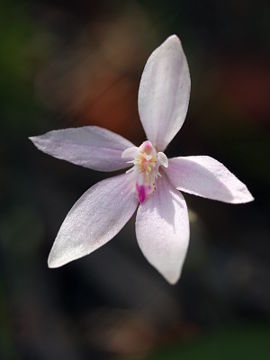
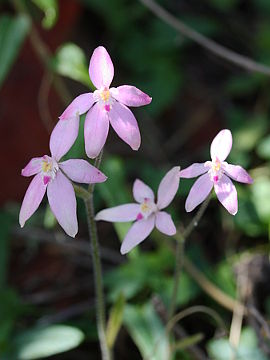
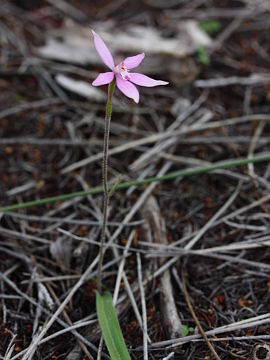
References
- Caladenia reptans in the Australian Plant Name Index
- Caladenia reptans in the Atlas of Living Australia
- Caladenia reptans in the Western Australian FloraBase